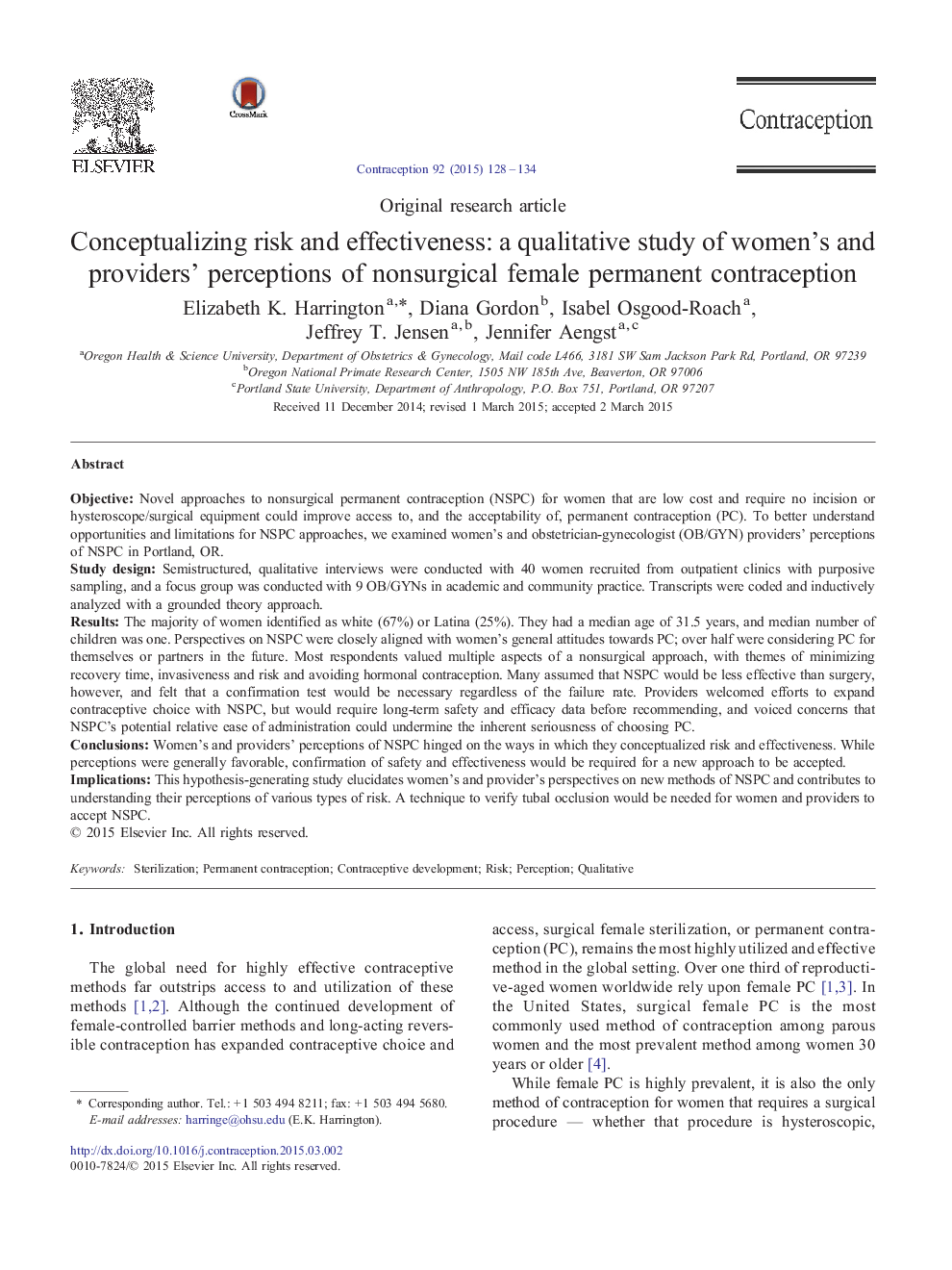| کد مقاله | کد نشریه | سال انتشار | مقاله انگلیسی | نسخه تمام متن |
|---|---|---|---|---|
| 6171089 | 1251421 | 2015 | 7 صفحه PDF | دانلود رایگان |

ObjectiveNovel approaches to nonsurgical permanent contraception (NSPC) for women that are low cost and require no incision or hysteroscope/surgical equipment could improve access to, and the acceptability of, permanent contraception (PC). To better understand opportunities and limitations for NSPC approaches, we examined women's and obstetrician-gynecologist (OB/GYN) providers' perceptions of NSPC in Portland, OR.Study designSemistructured, qualitative interviews were conducted with 40 women recruited from outpatient clinics with purposive sampling, and a focus group was conducted with 9 OB/GYNs in academic and community practice. Transcripts were coded and inductively analyzed with a grounded theory approach.ResultsThe majority of women identified as white (67%) or Latina (25%). They had a median age of 31.5 years, and median number of children was one. Perspectives on NSPC were closely aligned with women's general attitudes towards PC; over half were considering PC for themselves or partners in the future. Most respondents valued multiple aspects of a nonsurgical approach, with themes of minimizing recovery time, invasiveness and risk and avoiding hormonal contraception. Many assumed that NSPC would be less effective than surgery, however, and felt that a confirmation test would be necessary regardless of the failure rate. Providers welcomed efforts to expand contraceptive choice with NSPC, but would require long-term safety and efficacy data before recommending, and voiced concerns that NSPC's potential relative ease of administration could undermine the inherent seriousness of choosing PC.ConclusionsWomen's and providers' perceptions of NSPC hinged on the ways in which they conceptualized risk and effectiveness. While perceptions were generally favorable, confirmation of safety and effectiveness would be required for a new approach to be accepted.ImplicationsThis hypothesis-generating study elucidates women's and provider's perspectives on new methods of NSPC and contributes to understanding their perceptions of various types of risk. A technique to verify tubal occlusion would be needed for women and providers to accept NSPC.
Journal: Contraception - Volume 92, Issue 2, August 2015, Pages 128-134